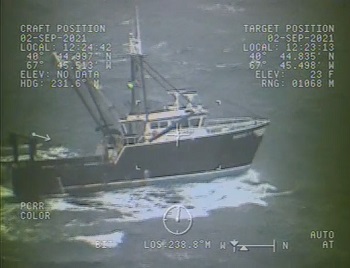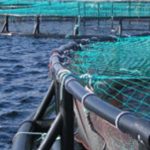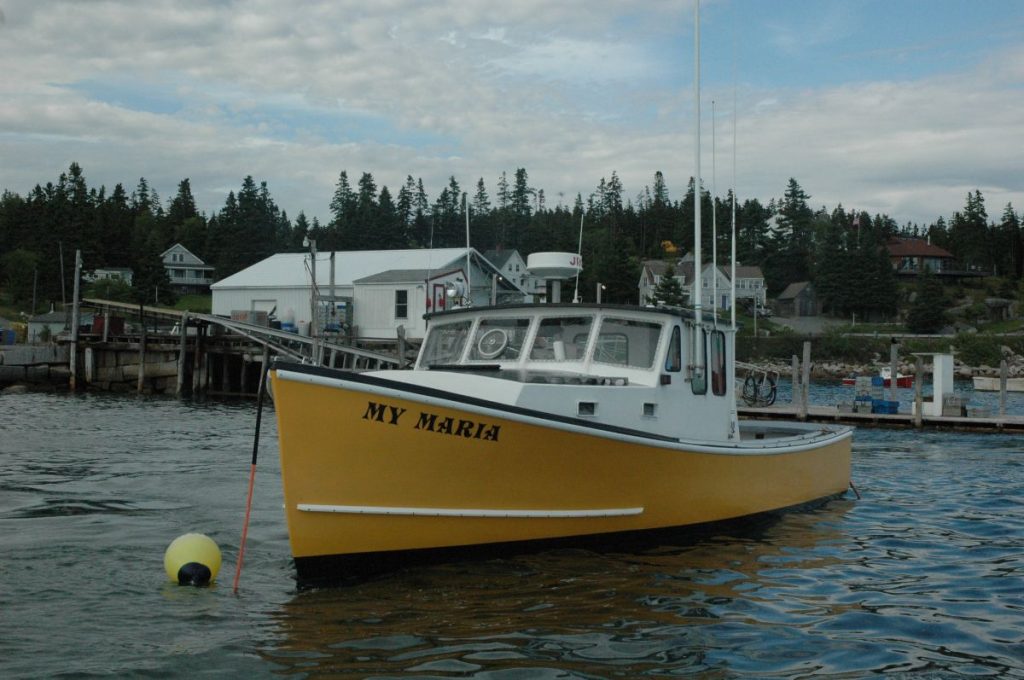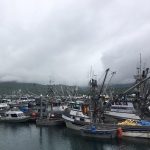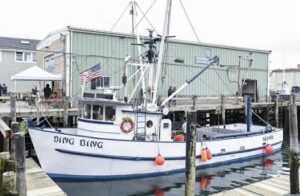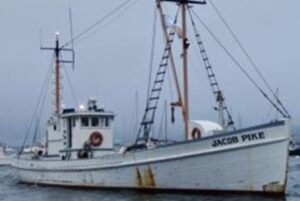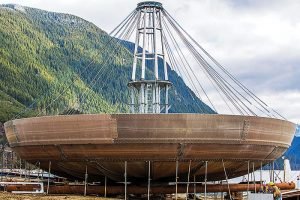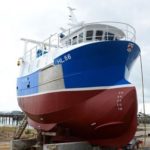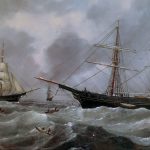Coast Guard Air Station Cape Cod Medevacs F/V Donny C. fisherman 110 miles south east of Nantucket
BOSTON — Coast Guard crews successfully medevaced a 47-year-old fisherman from the fishing vessel, Andrea A, and responded to a fishing vessel taking on water off the eastern shore of Nantucket, Massachusetts, Thursday. >click for video<
At 10:30 a.m., watchstanders at Coast Guard Sector Southeastern New England Command Center were notified by the fishing vessel, Donny C, that they were taking on water approximately 110 nautical miles southeast of Nantucket. The vessel’s two dewatering pumps onboard were not keeping up with the flooding and the crew were making preparations to abandon ship.
A Coast Guard Air Station Cape Cod MH-60 Jayhawk helicopter aircrew and HC-144A Ocean Sentry aircrew launched to assist and rescue the mariners. Coast Guard Cutter Escanaba (WMEC 907) was operating nearby and diverted to assist, along with fishing vessels Blue Wave, and Temptress.
At 10:40 a.m., watchstanders at Coast Guard Sector Southeastern New England Command Center were notified by the fishing vessel, Andrea A, that a crewmember was experiencing a loss of feeling and mobility in his legs.
The Coast Guard duty flight surgeon was consulted and recommended a medevac based on the concern that the fisherman’s condition could worsen if left untreated.
Based on the proximity of Coast Guard Cutter Escanaba and the other fishing vessels to the Donny C, the Coast Guard MH-60 helicopter aircrew diverted from the Donny C to the Andrea A.
The MH-60 aircrew successfully hoisted the patient from the fishing vessel Andrea A and transported him back to Air Station Cape Cod where Emergency Medical Services were waiting.
The fishing vessel Donny C was able to get the flooding under control with an additional dewatering pump provided by the fishing vessel Temptress and began transiting to New Bedford, Massachusetts.
Coast Guard Cutter Escanaba escorted the Donny C until they secured the source of flooding. Sector Southeastern New England Command Center then maintained a one-hour communications schedule with the vessel until they safely moored in New Bedford, Massachusetts.
“This situation was an outstanding example of the how our watchstanders, aircrews and surface assets work together to respond to any and all calls for help at sea.” said Captain Wes Hester, chief of incident management for the First Coast Guard District, “The ability of watch standers in Boston and in Woods Hole to assess the situation, recognize the proximity of Escanaba and divert the aircraft resulted in both cases concluding in positive outcomes.”
Strengthening partnerships and testing interoperability, the USCGC Escanaba, along with USCGC Richard Snyder (WPC 1127), participated in Operation Nanook in early to mid-August. Operation Nanook is the Canadian Armed Forces’ signature Arctic operation, comprising a series of comprehensive, joint, interagency, and multinational activities designed to exercise the defense of Canada and security in the region and incident management response and search rescue capabilities.
-USCG-
U.S. Coast Guard 1st District Northeast
Contact: 1st District Public Affairs






